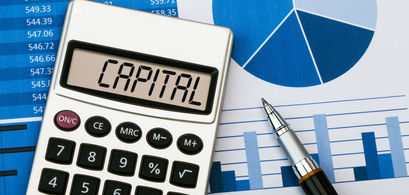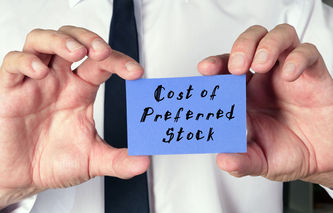Definition
The term cost of capital stock refers to a calculation that allows the investor-analyst to understand how expensive it is for a company to raise funds. The cost of capital is a weighted average of three supporting metrics: the cost of debt, the cost of preferred, and the cost of common stock.
Calculation
Cost of Capital = (Total Debt x Cost of Debt + Total Preferred x Cost of Preferred + Cost of Common Stock x Cost of Common Stock) / Total Funding
Where:
Cost of Debt = (Interest Expense x (1 - Tax Rate)) / (Total Debt - Fees + or - Premiums or Discounts)
Cost of Preferred Stock = Interest Expense on Preferred / Total Preferred Stock
Cost of Common Stock = Risk Free Return + (Beta x (Market Return - Risk Free Return)
Total Funding = Total Debt + Total Preferred Stock + Total Common Stock
Note: Additional detail on each of the above calculations can be found in the linked documents appearing at the bottom of this page.
Explanation
Market performance measures allow the investor-analyst to understand the company's ability to achieve their high level business profitability objectives. This is usually assessed by examining metrics such as insider transactions, capture ratios, enterprise value, capitalization rates and price to earnings ratios. Market performance metrics provide analysts with a way to determine if a company is going to successfully execute their business plan. One of the ways to determine how expensive it is for a company to raise funds is by calculating the cost of capital.
A company's cost of capital is important to understand since new investment decisions should produce results that generate returns greater than the company's cost of capital. Generally, there are three ways a company can raise funds: they can borrow money from lenders (debt), they can issue shares of preferred stock, and they can issue additional shares of common stock. Each of these funding mechanisms has a different cost to the company and companies typically balance the amount of debt they issue with the amount of equity outstanding. The cost of capital calculation is a weighted average for the business and reflects both the mix of funding as well as its cost.
When embarking on a new capital project, the business analyst will typically use the company's cost of capital as a proxy for the cost to fund the project. New investments should produce returns in excess of the company's cost of capital or the project will result in a decrease in earnings. That is to say it costs the company more to fund the project than the earnings produced by the project. Calculating a company's cost of capital requires analysts to calculate three different metrics:
The cost of debt is calculated by adjusting interest expense for income taxes, since the expense is tax deductible, and the total debt of the company should also be adjusted for acquisition fees, as well as any premiums and discounts received when the bonds were first issued.
The cost of preferred stock is calculated by dividing the interest paid on preferred shares (a dividend payment) by the total value of preferred shares held by investors.
Finally, the cost of common stock is calculated by taking the return on a risk free investment (such as a government bond) and adding to it the average return on the entire stock market minus the risk free return and then multiplying this value times to beta for the common stock.
Each of the above calculated costs is then multiplied by the amount of funds secured in each area and divided by the total funding of the business.
Example
The CFO of Company ABC is concerned the return on new investments are not being challenged and may be lower than the company's cost of capital. Much to her surprise, the company hadn't even calculated its cost of capital in recent years. After calculating the company's cost of debt (3.15%), and cost of preferred stock (2.90%), her team calculated the cost of common stock (11.65%). At this point the team had all three components of the cost of capital and could finally determine the company's value for this metric. The information below is what used when performing this calculation:
Cost of debt (3.15%) and total debt outstanding of $525,000,000
Cost of preferred stock (2.90%) and total preferred stock of $16,125,000
Cost of common stock (11.65%) and total common stock of $653,000,000
From this information, the cost of capital was calculated as:
= ((3.15% x $525,000,000) + (2.90% x $16,125,000) + (11.65% x $653,000,000) / ($525,000,000 + $16,125,000 + $653,000,000)= ($16,537,500 + $467,625 + $76,074,500) / $1,194,125,000= $93,079,625 / $1,194,125,000, or 7.79%



